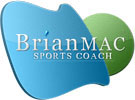

The Principles of Starting Strength
Katie Horne advises developing your strength using the Starling Strength program.
The coronavirus has upended society and markets, with millions out of work and stock portfolios decimated. However, the economy is not all doom and gloom: the markets have produced new winners.
Similarly, quarantine measures have upended daily routines, but many see this as a unique opportunity to get in the best shape of their lives.
What is Starting Strength?
Starting Strength is a barbell training program by former powerlifter Mark Rippetoe. It has received rave reviews from some medical doctors, including Dr Jonathon Sullivan in the United States.
Indeed, Sullivan is also known for his strength coaching service based on the Starting Strength principles.
There are two primary areas to consider when discussing Starting Strength:
- The exercises included
- How the exercises are programmed
The Exercises
The basic Starting Strength program includes just five exercises:
- The squat
- The deadlift
- The overhead press
- The bench press
- The power clean
Absolute beginners, however, can skip the “power clean.” Only after some training time do lifters begin alternating between the deadlift and the power clean.
All of the prescribed exercises are compound movements, which require the use of multiple major muscle groups and multiple joints. Compare t
Furthermore, when combined, these exercises provide a full-body workout, increasing your muscle mass and Strength and improving your range of motion.
The Programming
Starting Strength is a linear progression program, which means that the lifter starts with a comfortable but not too taxing weight.
Then, the lifter increases the weight that is lifted in each session. For example, someone squatting 175 pounds during one session would move up to 185 pounds during the next, assuming they could maintain perfect form while completing the prescribed number of sets and repetitions.
The exercise breakdown is relatively simple. There are two programs, and a user would alternate between them while working out no more than three times per week:
Workout A |
Workout B |
Squat |
Squat |
- For the first week, the lifter would perform Workout A, Workout B, and Workout A again.
- The following week, they would perform Workout B, Workout A, and Workout B (in that order).
Is Starting Strength Right for You?
With the sheer number of exercise options available, is Starting Strength the right choice for you? In the following sections, we will look at the program's pros and cons to help you decide.
Pros
- Simple: Starting Strength is simple. It only calls for five exercises, which make up two workouts you repeat regularly. It can be helpful to focus on performing a small number of exercises consistently and correctly instead of muddling through lengthy programs featuring many exercises that vary in frequency.
- Effective: Done correctly, Starting Strength is an excellent way to build your overall Strength and improve your body's range of motion. The exercises included form the basis for nearly all exercise programs.
Cons
- Requires equipment access: To perform the Starting Strength program, you must have, at a minimum, access to a squat or power rack, a barbell, weight plates, and a bench. Going to a gym has been the easiest way to access this type of equipment. However, because many gyms have been closed, a well-equipped home gym is necessary due to the coronavirus pandemic.
- May require coaching: Many have successfully figured out how to perform the exercises through trial and error, reading descriptions, and watching online videos. However, there is a risk that you could injure yourself by performing the exercises incorrectly, and if you cannot figure it out yourself, you may need to enlist a coach's help for a form check. (Coaches now make their services available via phone apps to coach you in real-time.)
- No accessory work: Starting Strength features only compound movements. Those who have goals other than getting strong (such as developing a specific bodily aesthetic) will find this program unsatisfactory due to the lack of accessory movements like bicep curls, leg curls, and so on.
Conclusion
Working out at home has become extremely popular, especially as the Coronavirus Pandemic has caused many gyms to temporarily close.
There are many options available to someone working out at home, but one that should be considered by anyone who is looking to get strong and has access to the necessary equipment is Starting Strength.
It is one of the classic weightlifting programs, and though many critics of it (primarily regarding its simplicity) have criticised it, it has stood the test of time.
Page Reference
If you quote information from this page in your work, then the reference for this page is:
- HORNE, K. (2020) The Principles of Starting Strength [WWW] Available from: https://www.brianmac.co.uk/articles/article569.htm [Accessed
About the Author
Katie Horne is a U.S.-based software engineer and technical writer who works out at home using the Starting Strength principles.